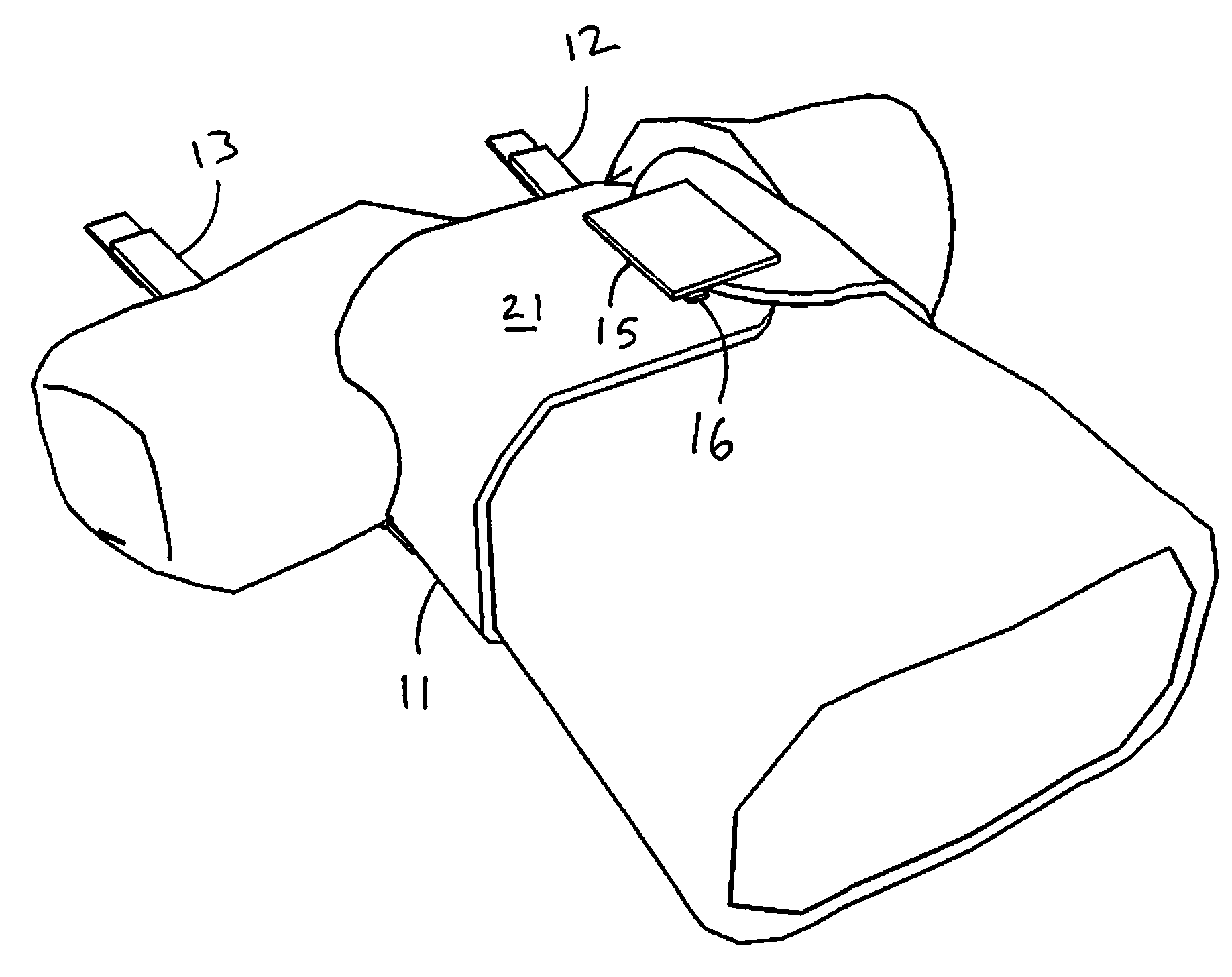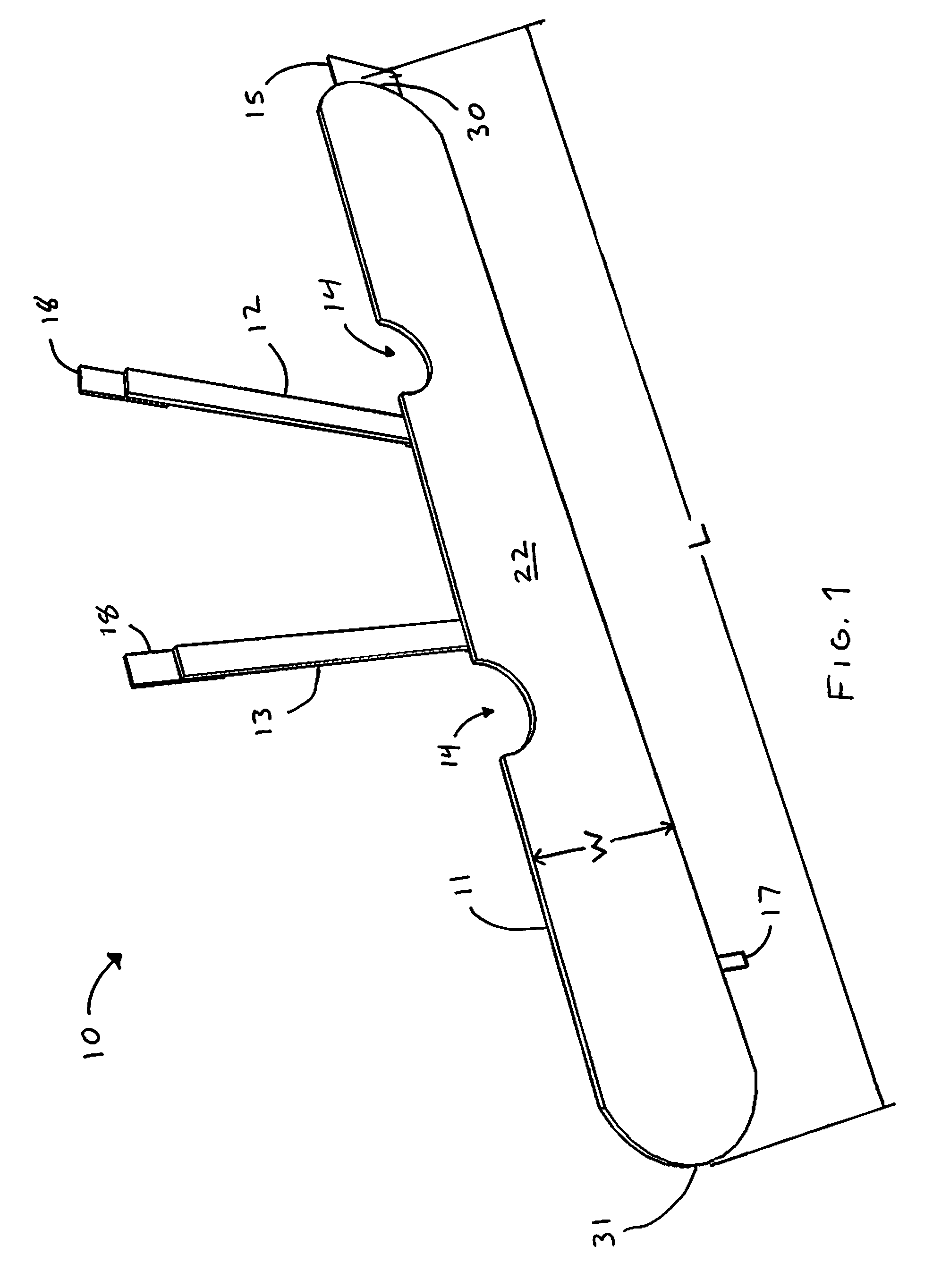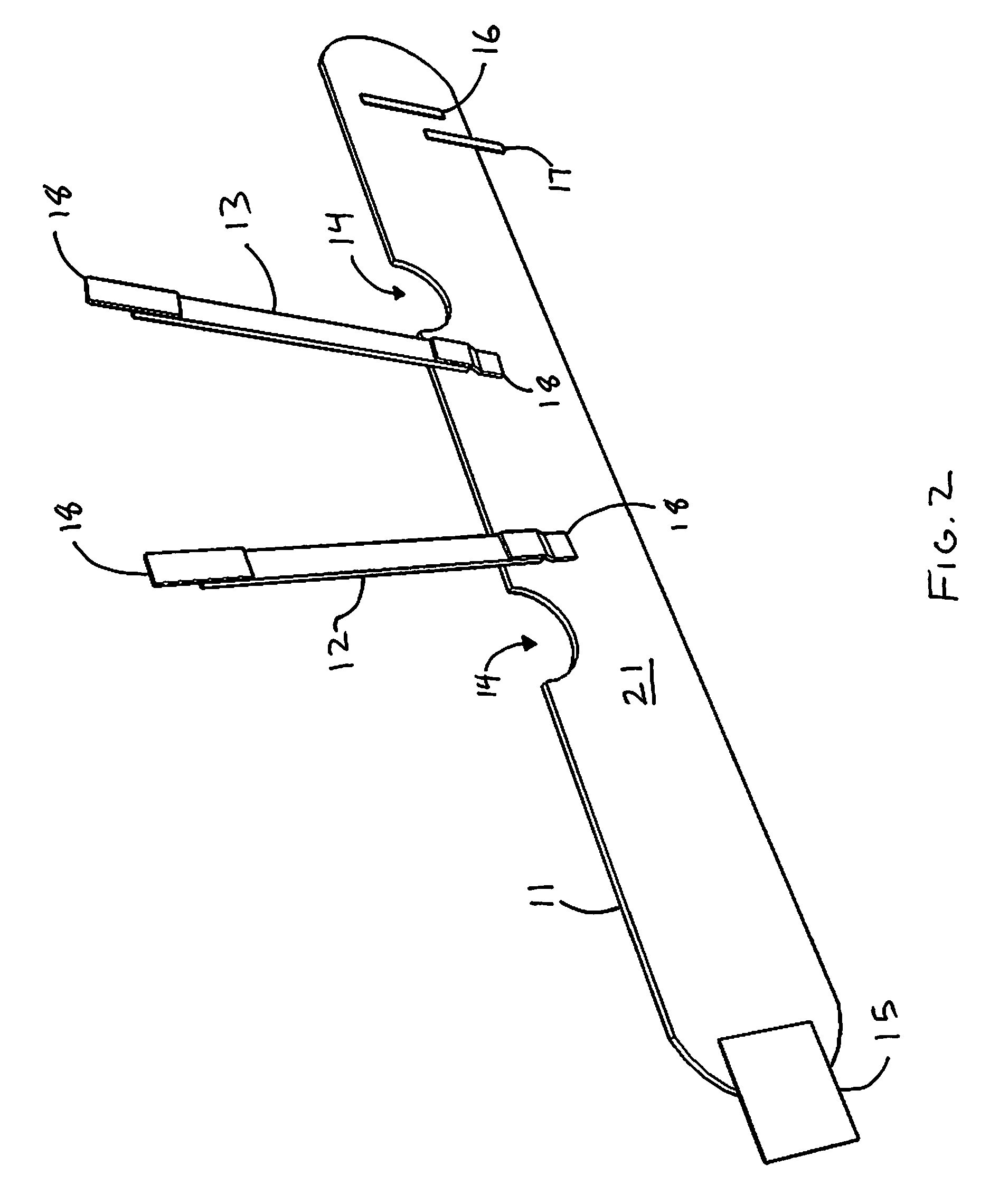Device and Methods for Accessory Chest Muscle Development
a technology of accessory chest muscles and chest muscles, applied in the field of muscle therapy devices, can solve the problems of affecting the patient's physical development, affecting the patient's physical and mental health, so as to improve the desired muscles of the patient, improve the patient's physical health and physical development, and improve the effect of physical and mental health
- Summary
- Abstract
- Description
- Claims
- Application Information
AI Technical Summary
Benefits of technology
Problems solved by technology
Method used
Image
Examples
Embodiment Construction
[0018]The present invention is a method of strengthening the accessory muscles of the upper torso, also referred to herein as the chest, and a device used to perform the method. Referring to FIGS. 1 and 2, there is illustrated the preferred embodiment of the device, designated generally as 10, which is a wearable, compressive article comprising a wrap 11, at least one left shoulder strap 12, and at least one right shoulder strap 13. The wrap 11 is configured to wrap substantially entirely around a patient's chest and attach to itself to form a compressive loop. The wrap 11 is made of a substantially flexible and substantially elastic material, such as natural or synthetic rubber or another polymer, and is most preferably made of neoprene. Properties that relate to the flexibility and elasticity of the wrap 11, including the thickness and density of the material, may depend on the desired amount of resistance to be applied by the device. For example, the preferred thickness of the ne...
PUM
 Login to View More
Login to View More Abstract
Description
Claims
Application Information
 Login to View More
Login to View More - R&D
- Intellectual Property
- Life Sciences
- Materials
- Tech Scout
- Unparalleled Data Quality
- Higher Quality Content
- 60% Fewer Hallucinations
Browse by: Latest US Patents, China's latest patents, Technical Efficacy Thesaurus, Application Domain, Technology Topic, Popular Technical Reports.
© 2025 PatSnap. All rights reserved.Legal|Privacy policy|Modern Slavery Act Transparency Statement|Sitemap|About US| Contact US: help@patsnap.com



